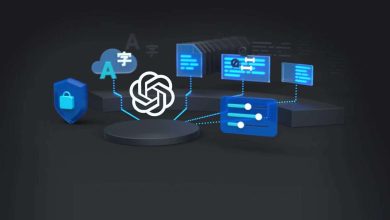Cities are evolving at an unprecedented pace. Population density increases year after year, placing immense pressure on existing infrastructure. Traditional urban planning methods struggle to keep up with these demands, creating challenges in transportation, sustainability, and quality of life.
Emerging technologies offer solutions to these pressing urban challenges. From artificial intelligence optimizing traffic flow to innovative materials transforming underutilized spaces, the ways technology revolutionizes urban spaces extend far beyond simple digitization. These advancements fundamentally reshape how cities function, how residents interact with their environment, and how buildings maximize their potential.
AI-Powered Transportation Systems Transform City Mobility
Traffic congestion costs cities billions in lost productivity and environmental damage. Traditional traffic management systems rely on fixed timing patterns that cannot adapt to real-time conditions. AI changes this equation entirely.
Modern GPS systems now integrate real-time traffic data, weather conditions, and road closures to provide optimized routing. Convolutional Neural Networks and Graph Neural Networks aggregate scattered information into comprehensive datasets. This technology reduces travel time for individual drivers while improving traffic flow throughout the city.
Smart parking systems predict congestion before it occurs. These platforms analyze historical patterns alongside current availability to direct drivers toward open spaces. Machine learning algorithms identify trends across vast datasets, enabling parking systems to anticipate demand during special events or peak hours. The result? Reduced emissions from vehicles circling for parking and improved air quality in dense urban areas.
AI has also become integral to urban transport management, with cities like Phoenix experiencing a decrease in vehicle delays after implementing smart traffic lights. These systems adjust signal timing in real time based on traffic patterns, prioritizing emergency vehicles and public transit when needed.
Obstacle detection systems represent another advancement. AI-enhanced sensors help both autonomous and traditional vehicles avoid collisions by processing local data instantaneously. These systems combine laser, optical, and acoustic sensors to provide a comprehensive understanding of the vehicle’s surroundings. As autonomous cars approach deployment in major cities, this technology is essential for public safety.
Smart Infrastructure Enhances Building Performance
Urban buildings consume approximately 40% of global energy. Traditional building management systems operate on fixed schedules, wasting energy when spaces sit empty. However, technology is revolutionizing urban spaces with smart infrastructure that addresses this inefficiency through sensor networks and predictive analytics.
IoT devices throughout buildings monitor occupancy, temperature, and energy usage in real-time. Machine learning algorithms identify patterns in this data and automatically adjust heating, cooling, and lighting systems. Buildings learn from occupant behavior, anticipating needs before occupants even recognize them.
Edge computing processes this data locally, enabling immediate responses without relying on cloud connectivity. This approach reduces latency and improves system reliability. When a conference room fills unexpectedly, the climate control system responds within seconds, maintaining comfort while optimizing energy consumption.
Building automation extends beyond climate control. Smart elevators predict traffic patterns during peak hours, reducing wait times. Automated window blinds adjust throughout the day, maximizing natural light while minimizing heat gain. These systems work together to create responsive environments that adapt to changing conditions.
Innovative Materials Unlock Rooftop Potential
Urban density leaves little room for traditional outdoor spaces. Ground-level parks and plazas remain scarce in many cities. Rooftops represent vast untapped potential for addressing this shortage.
The fifth façade—as architects call rooftops—transforms from purely functional space into valuable real estate. Advanced materials make this transformation possible. Woven metal fabrics engineered from marine-grade stainless steel provide durability while maintaining flexibility. These materials withstand prolonged tension, impact, and heavy loads, meeting stringent safety requirements for rooftop applications.
High-performance materials enhance rooftop design through multiple applications. Metal fabric partitions create defined spaces and privacy screens without blocking airflow or views. Open-weave patterns enable natural ventilation while providing solar shading, reducing cooling costs for the building below.
These materials also support biophilic design. Woven metal walls serve as substrates for climbing plants and rooftop gardens. The durable material resists natural elements while supporting irrigation systems and plant maintenance. Green walls integrated with metal fabric create attractive spaces year-round, maintaining visual appeal even during dormant seasons.
Equipment screening represents another practical application. HVAC systems, communication technology, and other rooftop equipment require protection and maintenance of access. Metal fabric screening shields this equipment from view, while enabling airflow and easy service access. The result transforms functional rooftops into attractive outdoor amenities.
The acoustic properties of these materials address noise pollution from nearby highways or railway infrastructure. Strategic weave patterns dampen sound without compromising ventilation or sight lines. Rooftop spaces become peaceful retreats despite their urban context.
Sustainable Technologies Address Environmental Challenges
Urban areas account for approximately 75% of global carbon emissions. Traditional energy systems and transportation infrastructure contribute heavily to this total. Sustainable technologies offer pathways toward carbon neutrality.
Smart grids balance energy supply and demand in real-time. Renewable energy sources like solar and wind fluctuate based on weather conditions. Battery storage systems accumulate excess energy during high production periods and release it during peak demand. Machine learning algorithms optimize this balance, reducing reliance on fossil fuel backup generation.
Electric vehicle charging infrastructure is expanding rapidly across cities. Smart charging systems coordinate with the grid, scheduling charging during off-peak hours when renewable energy availability is highest. Vehicle-to-grid technology allows electric vehicles to return stored energy to the grid during high-demand periods, creating distributed energy storage networks.
Green building certifications drive the adoption of sustainable construction practices. LEED and similar programs reward energy efficiency, water conservation, and material selection. Buildings incorporating recycled materials, passive solar design, and efficient systems achieve lower operating costs while reducing environmental impact.
Urban agriculture transforms underutilized spaces into productive areas for food production. Rooftop farms and vertical gardens reduce food transportation distances while providing fresh produce to local communities. These installations also improve air quality, reduce urban heat island effects, and manage stormwater runoff.
Connectivity Infrastructure Enables Smart City Functions
Smart city technologies depend on a robust connectivity infrastructure. Sensors, cameras, and devices require constant communication to function effectively. Traditional cellular networks struggle to support the massive number of connected devices cities deploy.
5G networks provide the bandwidth and low latency smart cities demand. This technology enables real-time communication between vehicles, infrastructure, and management systems. Autonomous vehicles navigate safely through dense urban environments. Traffic signals coordinate with approaching emergency vehicles. These applications require split-second communication that previous network generations cannot support.
Edge computing complements 5G by processing data locally, rather than sending everything to distant data centers. This approach reduces latency and bandwidth requirements while improving system resilience. Local processing continues even if internet connectivity fails, ensuring essential services remain operational during outages.
Mesh networks create redundant communication pathways throughout cities. Multiple routes between devices ensure connectivity even when individual links fail. This resilience is crucial for emergency services and the management of critical infrastructure.


